
Ontario Brook Trout Fishing
The Brook Trout also called the Speckled Trout by most people in Canada, is the most beautiful trout in the world. They can also be very elusive and frustrate the most seasoned Brook Trout Angler. They are also considered a very prestigious fish among trout anglers especially when you are talking about the size of Brook Trout guests are catching north of Nakina. In most places, a 12-inch Brook Trout is considered a really big trout. It's actually hard to catch trout that small at our fly-in river camps.
1.jpg)
Trophy Brook Trout
Fly-in Brook Trout Fishing Ontario:
We are very lucky to have two Ontario fly-in camps on rivers that are rated to be among the top Brook Trout Rivers in Canada and without question the best in Ontario. The camps are far north and more expensive to fly to but worth it to guests who are obsessed over giant Brook Trout. As a result, neither camp experiences any noticeable fishing pressure that would be needed to affect the fishery. The result is Brook Trout fishing just as good as it was hundreds of years ago.

Trout in Ontario
Dusey Lake / Dusey River:
Dusey Lake Camp is one of our fly-in outposts and offers great trout fishing. The lake is formed by the widening of the Dusey River, which eventually runs into the Albany River, which runs into James Bay. The Dusey River produces Brook Trout of fantastic size by most standards and produces good numbers. In the spring you can head west from our cabin and stick along the north shore and you will come to the first set of rapids. There will be Brook Trout in the rapids but also giant Northern Pike feeding on them so they spook very easily at these rapids. Once you have fished the rapids, you can drive the boat up the rapids and reach Loten Falls. You must be quiet and paddle the boat up to the right side of the falls and tie the boat to a branch. Then you can cast with small spinners, Cleos, and "wet flies" to hook into some beautiful Trout. If you don't get any right away, sit quietly and wait 20 minutes because bringing the boat into the area probably spooked them.
1.jpg)
Guests have caught many Brook Trout in the 1 to 3-pound range at the falls. There are 4 and 5-pound Brook Trout in this part of the river. It's usually the small ones that you catch first as they are more aggressive. You just have to be quiet and keep casting.
The east end of the lake is where the river runs out. Late spring and summer there is a portage that goes to the bottom of the rapids and we have a 14-foot boat and motor waiting for you. In early spring the water will be too high and many feet into the bush and the portage is underwater. You don't need to go below the rapids. Before the May Fly hatch, the big Brook Trout will be in the lake right at the top of the rapids in the smooth water before hitting the threshold of the rapids. They are there waiting for the May Flies to start floating downstream so casting a fly, tiny spinner, or Cleos will get them. In the summer when water levels are lower, you can use the portage. Below the rapids, the Brook Trout fishing is outstanding right up to the beginning of July. In the heat of the summer, warm surface water from Dusey Lake pushes the Brook Trout downstream to where cold springs flow into the river. Below the big rapids, there is unbelievable Walleye and Pike fishing as well.

Teabeau Lake:
Teabeau Lake is a widening of the famous Albany River. There are many sets of rapids up and down the river that hold many Brook Trout and have been very productive.
In the Albany River, Brook Trout are common in the 1 to 4-pound range. Every year guests pull 5 and 6-pounders out of the river. There have been many reports that Brook Trout as big as 7 and 8 pounds have been caught. We don't want you to think you are going to catch a 7 or 8-pound Brook Trout but it is possible and there is no better place to be if you are looking for an extraordinary trophy Brook Trout. Whether you fish the Albany, Dusey, or Opichuan River, most guests experience the best Brook Trout fishing they have ever had and catch the biggest Brook Trout of their lives.
.jpg)
Drive-to Brook Trout Fishing:
Our drive-in fishing camps in Ontario are close to a series of small spring-fed lakes that you can drive to with Brook Trout. You will need to bring a canoe, as motors are not allowed on these lakes. Some of these lakes are considered Artesian Wells and are being protected from any source of pollution. These lakes are all back in the bush and only accessible via logging roads. Some of the roads are not maintained so it's best to have a truck or SUV that can take some bumps and potholes. We will not divulge the location of these lakes on our website but guests staying at the Base Camp will be told where they are if so desired. These lakes have been stocked with Brook Trout since the late 80s and now produce Brook Trout up to 4 pounds.
How to Catch Brook Trout in Nakina's Big Rivers:
Brook Trout have to be the most frustrating fish to fish for sometimes because they spook so easily. They hear the sound of the motor a mile away and can see you 100 yards away. Before reading the tips below, remember to always wear dark green, dark brown, or black clothing when Brook Trout fishing. Paddle your boat as far as you can to reach a spot. You must always fish a trout hole from below or down the river. When approaching a trout hole be quiet, walk very slowly, and do not jump from rock to rock because if you land on a loose rock and bang two rocks together, the game is up. You have to become a ghost if you want the really big trout to hit. They are big and they are old because they are smart and very cautious.
Trout Migration:
Brook Trout prefer lots of oxygen and a water temperature of 53 degrees or colder. Because of this, Brook Trout actively migrate up and down the rivers all year looking for the right conditions. In the spring, the Brook Trout are easy to find. Any river section with rapids or strong currents will hold the trout. As the season changes into summer, the Brook Trout get ready to migrate. Warm surface water flows out of the lakes and into the rivers. At the mouth of the river, the water is too warm for trout so they migrate downstream. As the water runs through rocks it cools down. Also, subterranean water and natural springs run into the river thus cooling the water. So in the summer months, odds are you will have to travel downstream until the water is cool. The exact opposite can be true. If the headwater for a creek is a cold spring-fed lake, then the Brook Trout will travel farther upstream to the cooler temperatures. You have to look at the water source to determine where they will be.
.jpg)
Baits and Lures:
Fishing for Brook Trout is similar to river fishing for Rainbow Trout. Small spinners like #3 Mepps or #4 Blue Foxes work best. They will also hit worms and natural bugs like Grasshoppers or Mayflies. Fly fishing with artificial flies is an excellent method. The most convenient bait for river fishing is the Berkley Trout Bait. It's a smelly doe that molds like Silly Putty. If you purchase a bottle, make sure it's floating. A small jar will last all day and it fits into your pocket. Just roll up a small bit into a round ball the size of a salmon egg and put it on your hook. When Brook Trout fishing you should use an 8 or 10-pound test line with #6 hooks. The most popular hooks for trout are the Eagle Claw Laser Sharp trout hooks. If you are an experienced river fisherman, then you would just use what you like best.
.jpg)
Trout Floats:
A great way to fish the slow-moving pools or deep rapids is with a Saugeen River Trout Float Rig. You still use a light line with trout bait but the setup is a little different. You have to estimate the depth of the water. Let's say it's three feet deep. Put a trout float on your line about 2.75 feet up from your hook. Every 6 inches you would want to put a very tiny sinker on the line. Use the smallest you can find. The purpose of the sinkers is to control the way your bait floats downstream. With this method, your bait will be almost straight down from your float as it moves downstream. So what's the purpose? When a fish hits your line your float reacts at once. It also keeps your bait just off the bottom and it prevents your line from floating sideways, which causes snags.
Suckers:
If you go to a river mouth in the spring, you may see millions of suckers spawning. The suckers come out of the lakes and travel down or upstream. They usually only go a couple hundred yards. The problem is all the Brook Trout in the area will gorge themselves on the sucker eggs. So if the Suckers are spawning, you may have to go 1000 yards up or downstream before you find hungry Brook Trout. In a larger river, the Brook Trout will stay at the base of the rapids or waterfalls. You may find them in deep pools but generally, they like bubbles in the water. The most important aspect of Brook Trout fishing is how to approach the area you want to fish. Brook Trout spook very easily. If you see a part of the river that looks like a good spot, walk through the bush until you are below the spot and approach it from downstream. Cast upstream of the area you want to fish and let your bait float over the selected area.
.jpg)
Be Nice:
Please always wet your hands before touching a Brook Trout. They have very sensitive skin and if you hold one with dry hands you will rub the protective layer of slim off their skin and the trout will die of infection. Dusey River and Albany River are catch-&-release only on Brook Trout. You can take the next step and go barbless. We must protect this resource.
.jpg)
How to Catch Deep Water Splake on Lucy Lake:
The only lake we have where you will need to use the trout tips below is Lucy Lake, which is a portage off of Hanover Lake. In the spring you just need to troll around the lake or cast with Cleos, spinners, and other small casting spoons because the trout will be shallow. In the summer, the Splake will be 35 to 55 feet deep so the method below is perfect for trolling deep and all you need is your Walleye stick and a few weights.
Please Note: Fish in the north avoid artificial scents. Do not put scent on your lures. Wash your lures before you head north if you have ever used artificial scents.
The 3-way swivel technique below is ten times better than using steel lines or bait-walkers. First, you can use light equipment, second, it's a lot more fun, and last, you will catch ten times as many trout. You need a light action rod with a 6-pound test dark green line. You also need a three-way swivel and a 1 or 2-oz weight depending on how deep you want to fish. Brook Trout generally are shallower than Lake Trout so a 1-oz weight is good to start with. Go to 2-oz if your boat trolls a little fast.
Trolling Slow:
You only want to move just fast enough for your lure to work and no faster. If your boat is moving too fast, it will be very hard to find the bottom of the lake. If you are using a boat with a bigger motor and it's hard to keep slow, try backtrolling.
Finding the bottom:
The most important aspect of deep-water trout fishing is letting out the line to get to the bottom. DO NOT JUST LET YOUR LINE OUT UNTIL IT HITS BOTTOM. Hold the rod in one hand with the bail open. Let the line run through the palm of your other hand and grip the line. Once the boat starts moving and you have a good straight troll going, open your hand with the line then close it again. This way you can let out a foot or two of line at a time. Get a rhythm going. Open, close, open, close. Your rod tip will bounce up and down as you release little bits of line at a time. The rhythm of your rod tip bouncing will be disrupted when your weight hits the bottom of the lake. When this happens, reel up a foot or two. The purpose of this procedure is to keep your 3-way swivel setup from getting tangled.
Weather:
In the summertime, Brook Trout hit best in the morning between first light and 10:30 AM. They will hit better if the surface of the water is dead calm and it's a clear sky with high pressure. Any other conditions will cause them to slow down. If it's early spring, the trout seem to feed in other parts of the day. In some lakes, the trout feed aggressively before dark.
Structure and wind:
Take a close look at the structure of the shoreline and try to extend the elevation patterns into the lake. If you see a cliff, odds are the water is deep at its face. If you see a string of islands, odds are there is a shallow shoal that runs between them. Trout-like drop-offs so you would want to troll parallel to the string of shoals and not over them.
When you drop your line to the bottom, count how many times you let out the line. You can get a good estimate of the depth. For Brook Trout, try to stay in 20 to 35 feet of water and close to shore. For Lake Trout, go a little deeper. 40 to 60 feet of water is usually a good feeding depth. If you come across a spot and catch a trout, odds are there are more of them there.
The wind is very important when trout fishing. Traditionally for warm water fish like Walleye or Musky, you would fish on the side of the lake where the wind is blowing. The logic is that the fish follow the surface food that is being blown in. With trout, it's the exact opposite. The wind also blows the warm surface water, which does not hold enough oxygen for the trout. Thus fish the side of the lake where the wind is coming from.
Depth:
Similar to our Walleye Fishing Camps, In the Spring, the Brook Trout will be right up to the surface. As the water starts to warm up with the changing weather, the trout start to go deeper. Here is the approximate depth for different times of the year. This is not true for all lakes. Some smaller spring-fed lakes will have trout shallow all year.
- Just after ice-out --> Between 10 feet and the surface
- Mid Spring --> About 10 to 20 feet deep
- Late Spring --> About 20 to 30 feet deep
- Summer --> Summer is the tricky part. Many believe that the Brook Trout go to the deepest part of the lake and stay dormant. In actual fact, the Brook Trout stay suspended in 53° thermal layers but can come right up to the warm surface water for short periods of time. Why are they there? That's where all the insects are. Brook Trout also feed on bait fish, which they find suspended in deeper schools. There will be trout on the bottom but they are not feeding. When they do feed, they come shallower.
In really cold lakes like Lake Superior, the Brook Trout swim right along the shore in the shallow water all year round. Many people call them Coasters.
Depth Finder:
It's good to have a depth finder so you can map the schools of baitfish that are suspended. When you do come across a school, troll around the outside of the school. The Brook Trout and Lake Trout sit right underneath the school waiting for weak or injured fish to venture outside the school. Out in the middle of the lake, you will find these schools of bait fish in the 20 to 60-foot range. It's different on most lakes but this is a good place to start.
This 3-way swivel method also works just as well for Lake Trout, Rainbow Trout (Steelhead), and Salmon. When we go for salmon on the Great Lakes, we go with an 8-pound test line and 3-oz weights. We catch 30-pound salmon on an 8-pound test line and a medium Ugly Stick. Just keep your drag set right for the line you are using and don't horse the fish in. Am I right in saying the fight is all the fun? With light equipment, it just takes a little longer to bring in the fish.
Brook Trout photo gallery at 7 Lakes Wilderness Camps.
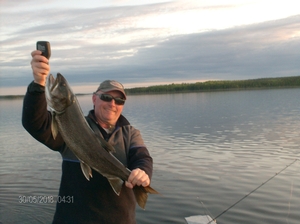
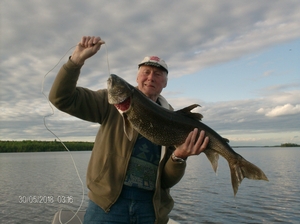
1.jpg)
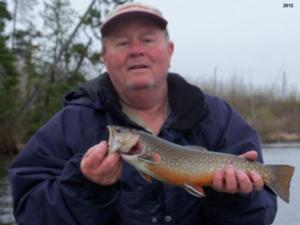
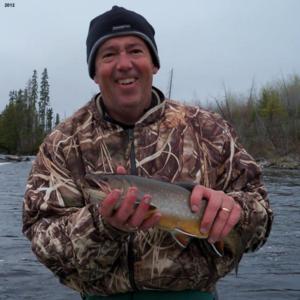
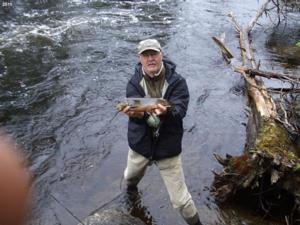
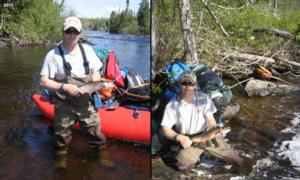
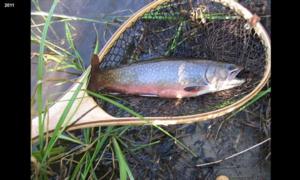
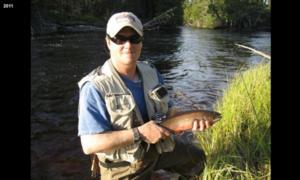
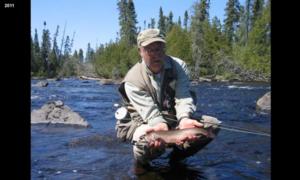
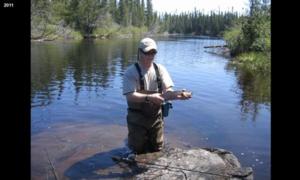
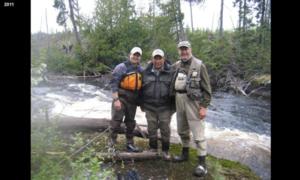
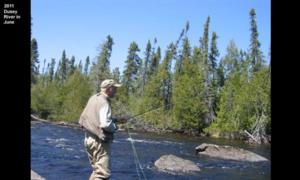
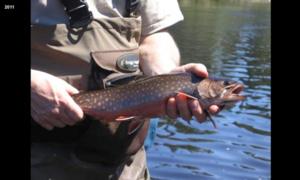
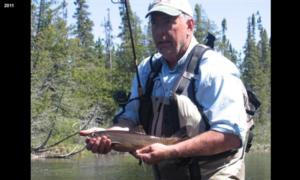
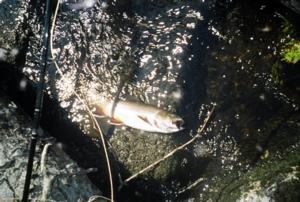

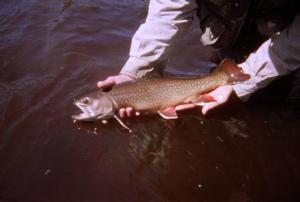
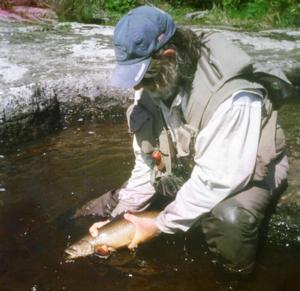

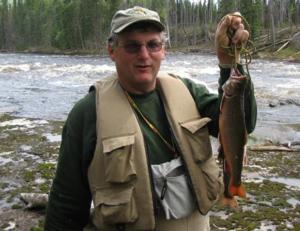

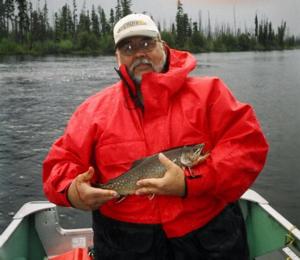
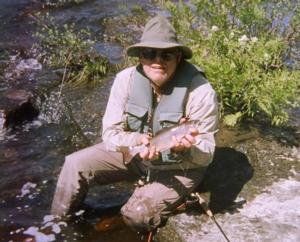
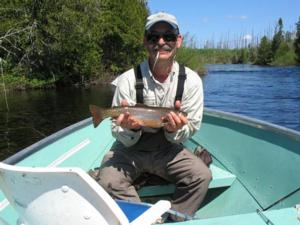



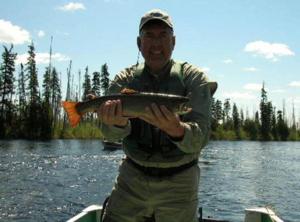

.jpg)

.jpg)
.jpg)
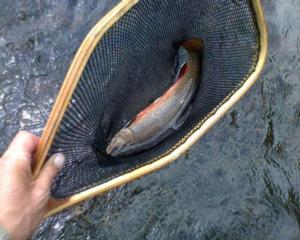
.jpg)
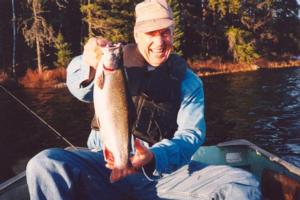
.jpg)

.jpg)
.jpg)
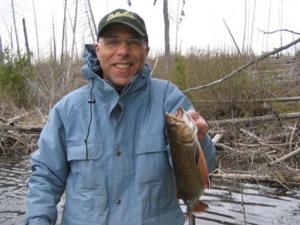
.jpg)
.jpg)
.jpg)
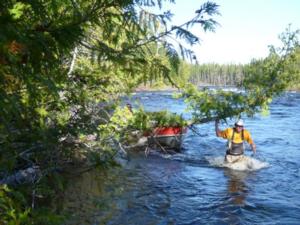
.jpg)
.jpg)

.jpg)

.jpg)
.jpg)
.jpg)
.jpg)
.jpg)
.jpg)
.jpg)
